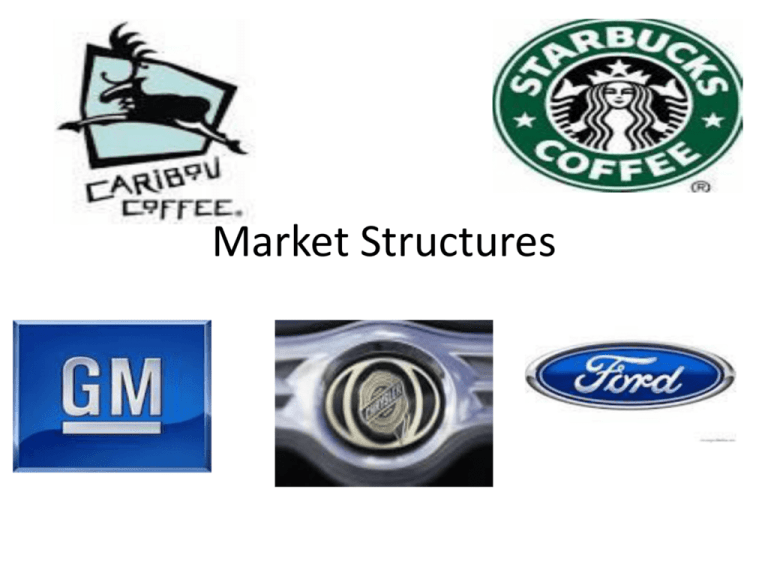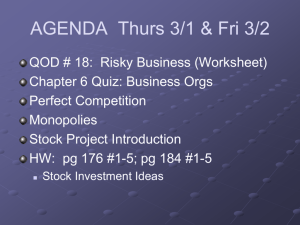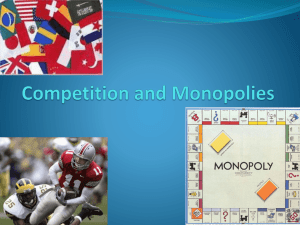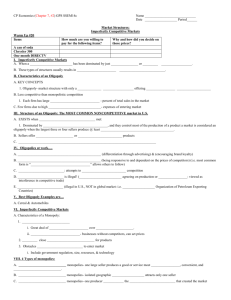Market Structures
advertisement

Market Structures Perfect Competition • Perfect competition is also called pure competition, few examples of perfect competition exist today. Examples include the markets for farm products and stocks traded on the NYSE. Four Conditions to Perfect Competition • 1. Many buyers and sellers participate in the market. • 2. Sellers offer IDENTICAL products. • 3. Buyers and sellers are will informed about products. • 4. Sellers are able to enter and exit the market freely. Why are there so few perfectly competitive markets? • There are many barriers to entry, or factors that make it difficult for a new firm to enter the market. • 1. Start –Up Costs: the expenses a firm must pay before it can begin to produce and sell goods • 2. Barriers of technology and know-how can keep a market from being perfectly competitive Why are commodities usually perfectly competitive? • Commodities are termed as ‘identical’ products, and in a perfectly competitive market, all products are identical Monopoly • What is a monopoly? – a market dominated by a single seller What are some characteristics of monopolies? • All monopolies have a single seller in the market. • It is VERY difficult to enter a market, cost prohibitive. • All monopolies have economies of scale [factors that cause a producers average cost per unit to fall as output rises] What are some characteristics of monopolies? Hydroelectric dams are examples of monopolies. Natural Monopolies – a market that runs most efficiently when one large firm provides all of the output – public water is an example of natural monopoly Technology can change natural monopolies – telephones were once a natural monopoly, because think copper wire was needed to provide service, when this was no longer the case, many companies were able to enter the market Government Monopolies • Government Monopolies – a monopoly created by the government – Ex: patent: inventors of a new product have exclusive rights to sell said product – Ex: copy right: authors have the right to make $$ off their literature Anti-Trust Laws • Were created to get rid of monopolies • Theodore Roosevelt & William Howard Taft were the Presidents who are called ‘Trust Busters’ • Sherman Anti-Trust Act: banned monopolies and other business combinations that prevented competition in 1890 Oligopolies • Market Structure in which a few large firms dominate a market • ex: 4 largest firms create 70% – 80% of the output • Barriers can also create oligopolies … like start-up costs & technology Monopolistic Competition • A market structure in which many companies sell products that are similar but not identical Market Structures Chart Oligopoly Monopoly Few Dominate Some One None Control over prices Little Some Complete Barriers to entry Low High Complete Examples Jeans Movie Studios Public Water # of firms Variety of goods Monopolistic Competition Many Some Helpful Vocabulary • Communism: a political system characterized by a centrally planned economy with all economic and political power resting in the hands of the central government (command) • Socialism: a system in which the government owns some factors of production and distributes wealth among citizens (command, mixed) • Capitalism: a system in which private citizens own most, if not all, of the means of production and decide how to use them with legislated limits (market)









